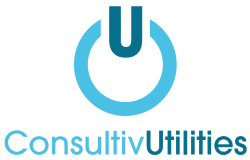Smart changes can successfully cut energy costs in educational institutions
Schools and academies consume substantial amounts of energy each month. From lighting and heating to computers, smart boards and more, there’s so much required to keep a school powered over the course of a term.
But with energy prices high and school budgets tighter than ever, what should the 32,000 schools in the UK be doing to manage overheads, make efficiency savings and improve sustainability credentials? Let’s take a closer look.
Understand where your energy is coming from
Knowledge is power when it comes to energy. Understanding what the biggest drains on resources are should be the first step towards making savings.
Several factors can impact how much energy a school building uses, including the condition of the building and how well the building and systems have been maintained and managed. The type of setting can also make a difference: primary, secondary, further education and special education schools all have different operational requirements.
The energy efficiency of your computers and appliances can make a difference, too, as can user behaviour. Catering equipment also has a part to play.
Check your temperatures
Something as simple as setting your temperatures to a more efficient level can make a big difference to your energy spending month on month. As we enter the warmer part of the year, take the time to check heating settings to make sure they reflect the warmer climate. Investing in smart heating solutions can help to tackle wasted energy in this area, helping an institution find the optimum level for any and all times of the year.
Don’t overlook computers and appliances
PCs and monitors are commonplace in modern schools and can use a lot of energy even when in standby mode – otherwise known as energy vampires. Staff and pupils should be encouraged to manually turn off monitors when they are not in use, as the National Resources Defence Council reports that monitors are responsible for almost two-thirds of a computer’s total energy consumption.
Devices and monitors should be switched off between classes and particularly at the end of the school day – especially before the weekend – in order to avoid wasted energy and unnecessary costs.
The same logic should also be applied to other devices, such as smartboards, televisions and vending machines. UK Vending reports that running a vending machine continuously can cost anywhere from £200 to £400 per year.
Assess lighting
Schools should put guidelines in place to encourage staff and pupils to switch off lights when leaving a room, as leaving lights on results in unnecessary energy usage and charges. Better yet, investing in timed switches and motion sensors can remove the risk of lights being left on overnight or over the weekend.
And when lights are on, it should be LED bulbs that are shining. LED lightbulbs use up to 85% less energy than traditional bulbs, lasting far longer than alternatives while also reducing your energy usage. As spring and summer approach, make use of natural light by keeping lights off unless it’s absolutely necessary.
Invest in an energy audit
An energy audit is a comprehensive way to get to grips with your energy usage, allowing you to take smart steps towards long-term improvement. Reviewing your energy with expert help from the likes of Consultiv Utilities can give you peace of mind that you’re paying the most competitive price for your energy, meaning you can focus on providing the best education for young people.
Looking for help and advice on effectively managing your business energy? You’re in the right place. Reach out to a team member today and find out how we can help you. Click here to get in touch with the team at Consultiv Utilities.
Categories:
